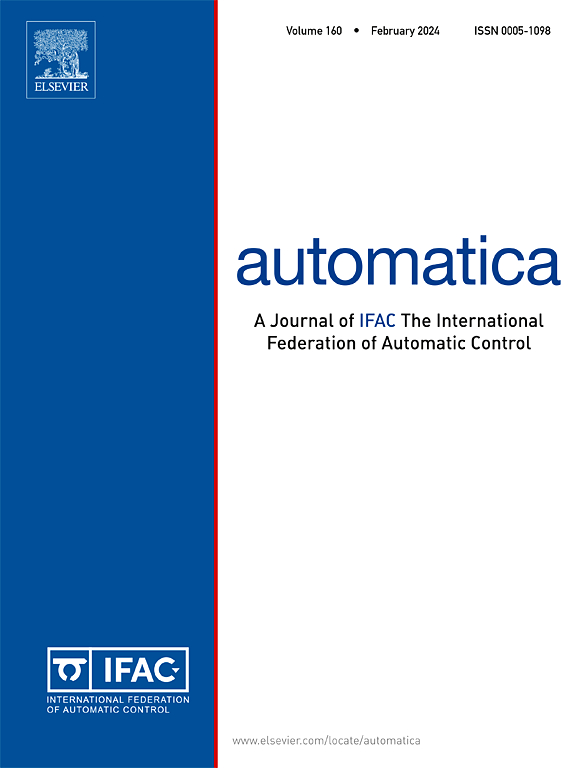Rendezvous analysis and control design for multiple mobile agents with preserved network connectivity on hyperboloid
IF 4.8
2区 计算机科学
Q1 AUTOMATION & CONTROL SYSTEMS
引用次数: 0
Abstract
This paper studies the rendezvous problem for a second-order multi-agent system on the hyperboloid under a proximity-based communication topology. Using the Riemannian geometrical structure on the hyperboloid, we design a nonlinear feedback control law in which each agent has a limited sensing range. By analyzing the switching behavior of the communication topology, we show that the switching time of the resulting closed-loop system is finite, and the connectivity of the communication topology is preserved if the initial network is connected. In addition, we also provide an analysis of the asymptotic behavior of the second-order closed-loop system on the hyperboloid and prove that the proposed feedback control law enables all agents to converge to the same position.
双曲面上保留网络连接的多移动代理的交会分析与控制设计
本文研究了基于近距离通信拓扑结构的双曲面上二阶多代理系统的会合问题。利用双曲面上的黎曼几何结构,我们设计了一种非线性反馈控制法则,其中每个代理的感知范围都是有限的。通过分析通信拓扑的切换行为,我们证明了由此产生的闭环系统的切换时间是有限的,而且如果初始网络是连通的,通信拓扑的连通性是保留的。此外,我们还分析了双曲面上二阶闭环系统的渐近行为,并证明所提出的反馈控制法则能使所有代理收敛到相同位置。
本文章由计算机程序翻译,如有差异,请以英文原文为准。
求助全文
约1分钟内获得全文
求助全文
来源期刊

Automatica
工程技术-工程:电子与电气
CiteScore
10.70
自引率
7.80%
发文量
617
审稿时长
5 months
期刊介绍:
Automatica is a leading archival publication in the field of systems and control. The field encompasses today a broad set of areas and topics, and is thriving not only within itself but also in terms of its impact on other fields, such as communications, computers, biology, energy and economics. Since its inception in 1963, Automatica has kept abreast with the evolution of the field over the years, and has emerged as a leading publication driving the trends in the field.
After being founded in 1963, Automatica became a journal of the International Federation of Automatic Control (IFAC) in 1969. It features a characteristic blend of theoretical and applied papers of archival, lasting value, reporting cutting edge research results by authors across the globe. It features articles in distinct categories, including regular, brief and survey papers, technical communiqués, correspondence items, as well as reviews on published books of interest to the readership. It occasionally publishes special issues on emerging new topics or established mature topics of interest to a broad audience.
Automatica solicits original high-quality contributions in all the categories listed above, and in all areas of systems and control interpreted in a broad sense and evolving constantly. They may be submitted directly to a subject editor or to the Editor-in-Chief if not sure about the subject area. Editorial procedures in place assure careful, fair, and prompt handling of all submitted articles. Accepted papers appear in the journal in the shortest time feasible given production time constraints.
 求助内容:
求助内容: 应助结果提醒方式:
应助结果提醒方式:


